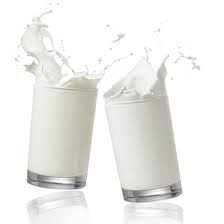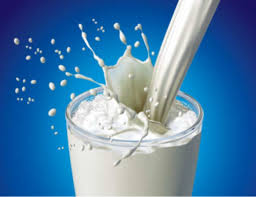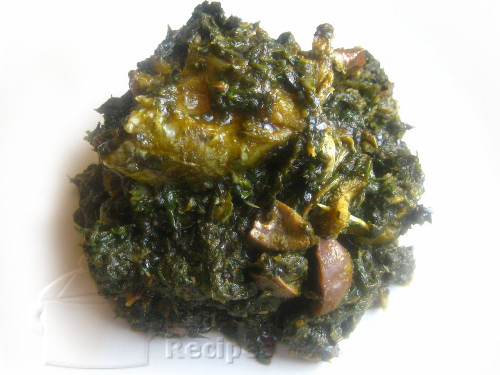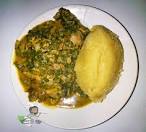Not everyone agrees about the benefits of milk in adulthood, or even after an infant has been weaned.

Positive aspects of milk
Of course if someone is allergic to milk protein or has a lactose intolerance, milk should be avoided or only be ingested in amounts the patient can tolerate. (In many cases, patients with lactose intolerance can digest up to a cup of cow’s milk a day without discomfort.)
Other forms of calcium-rich foods should then be included in the diet to prevent calcium deficiency and its associated diseases, such as brittle bone disease in young people and osteoporosis in senior citizens.
Studies that investigate the positive aspects of using milk and dairy products are currently not receiving much publicity, which is why I would like to highlight a recent study conducted by Prof In-Young Choi and a team of researchers at the Hoglund Brain Imaging Centre of the Kansas University (KU) Medical Centre. These researchers have identified a link between dairy intake and the concentration of glutathione in brain tissue of healthy, elderly adults.

Glutathione study
Glutathione is a powerful antioxidant which plays a vital role in protecting the human brain against reactive oxygen species (ROS) and free radicals that can damage brain tissue and lead to so-called “oxidative stress”. Oxidative stress is associated with a variety of diseases including those that affect brain functioning, like Parkinson’s, Alzheimer’s and other forms of dementia.
Scientists have known for a long time that ROS are elevated when humans develop diseases of the brain. In addition, levels of glutathione tend to decrease significantly in older adults. It has, therefore, been the goal of researchers to seek compounds, such as nutrients to increase glutathione levels in the brain in order to combat ROS and oxidative stress, and thereby prevent brain cell damage and degenerative brain diseases.
Preliminary studies identified dairy products as the only foods so far that increased glutathione levels in brain tissue. Because this concept is so revolutionary and so few people, particularly older adults, in the United States achieve the recommended intake of three servings of dairy products per day, the KU team set out to trace glutathione levels in three different areas of the brain in 60 healthy subjects (21 men and 39 women) with an average age of 69 years.
Advanced brain mapping techniques
Thanks to the advanced equipment and techniques available at the Hoglund Brain Imaging Centre, the KU researchers were able to carry out so-called “magnetic resonance (MR) chemical shift imaging (CSI)” to map regions of glutathione concentrations in the living brain tissue of their subjects. The glutathione concentrations of the frontal, parietal and frontoparietal regions of the brain were monitored.
Assessment of dietary intakes
The dietary intake of the subjects was monitored before the start of the MR CSI with the aid of 7-day records to classify the subjects into three categories, namely low (less than 1 serving of dairy per day), moderate (1-2 servings of dairy per day) and recommended (3 or more servings dairy per day). The subjects were also instructed to stop taking any supplements that could influence the glutathione levels in their brains.
Standardised, multiple-pass 24-hour recalls were used to determine dietary intake on 3 occasions. The recalls were administered over the telephone by trained diet-assessment staff.
A statistical analysis was carried out to investigate if glutathione concentrations as determined with MR CSI in brain tissue were correlated with the subjects’ intakes of milk, cheese and yoghurt, and the most important nutrients supplied by dairy foods (calcium, vitamin D, riboflavin).
Study results
The results showed that glutathione concentrations were highest in the group of healthy elderly subjects who consumed the most milk (in all 3 regions of the brain) and cheese (in the parietal region). These results support the findings of another study, namely that the DASH Diet (Dietary Approaches to Stop Hypertension), which is rich in dairy food, was associated with increased plasma levels of glutathione.
New glutathione theory
To date the finding that older individuals have lower glutathione concentrations in their brain tissue has been attributed to lower glutathione synthesis and greater oxidative stress. In the light of the present results, it is possible that older people lack glutathione to protect their brain cells because they do not consume sufficient dairy, particularly milk.
National surveys have found that only 23% of older adults in the USA consume the recommended three servings of milk or dairy a day. The percentage in South Africa is probably even lower, and many older people in this country may not drink milk or eat dairy products. Improved intakes of milk and dairy by older adults could have major positive implications for brain health.
Future research
The KU study will hopefully lead to more detailed research to define the role of milk and dairy in brain health. According to the editorial of The American Journal of Clinical Nutrition which published this ground-breaking study by Choi and his co-authors, the study presents “a provocative new benefit of the consumption of milk in older individuals”.
This is indeed a point to ponder for the future of the global population with its ever increasing percentage of older citizens who often suffer from brain damage caused by oxidative stress.
Encouraging dairy intake in senior citizens
Milk intake may well protect and improve our brains against this kind of degeneration as we age. Consequently older individuals should make an attempt to have three servings of milk or dairy products a day.
Milk and foods made with milk or yoghurt such as smoothies, desserts and sauces are easy to eat even for older people who may have difficulty chewing and swallowing. If you are a caregiver for seniors, keep in mind that milk and dairy products may just make it easier to provide a balanced diet for your charges that can also help them to stay mentally alert for years to come.












